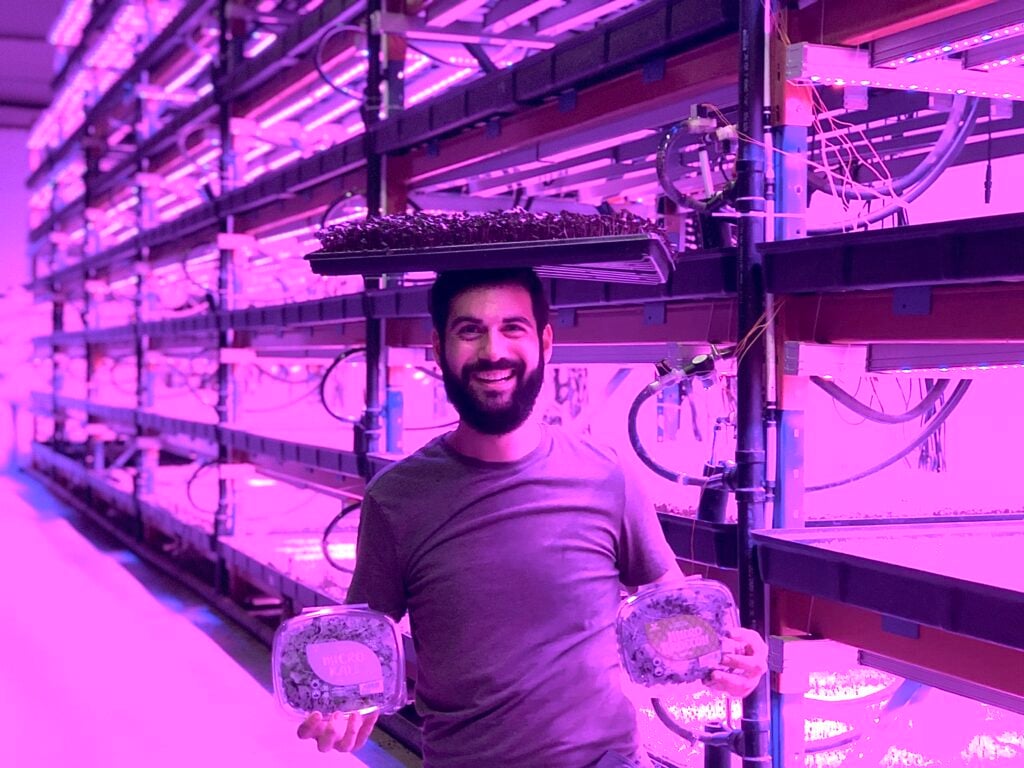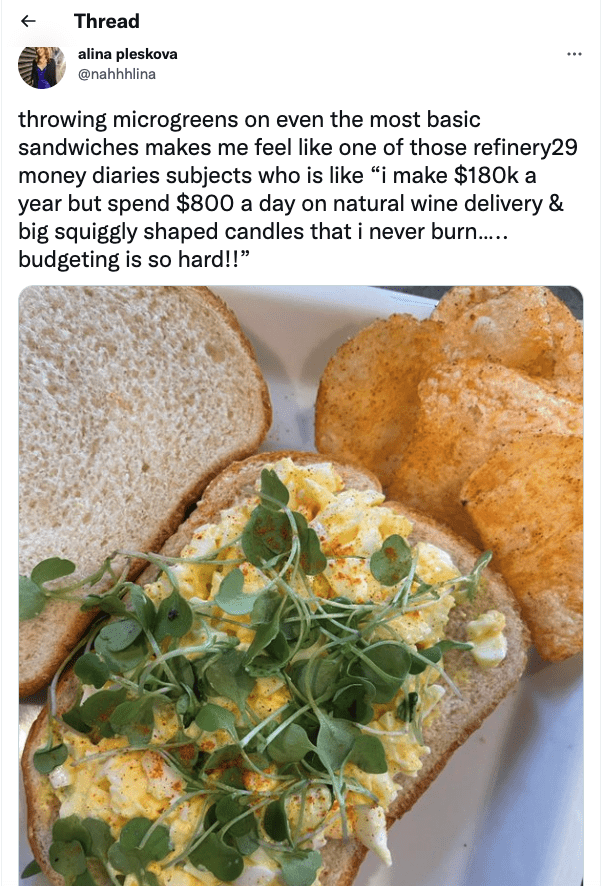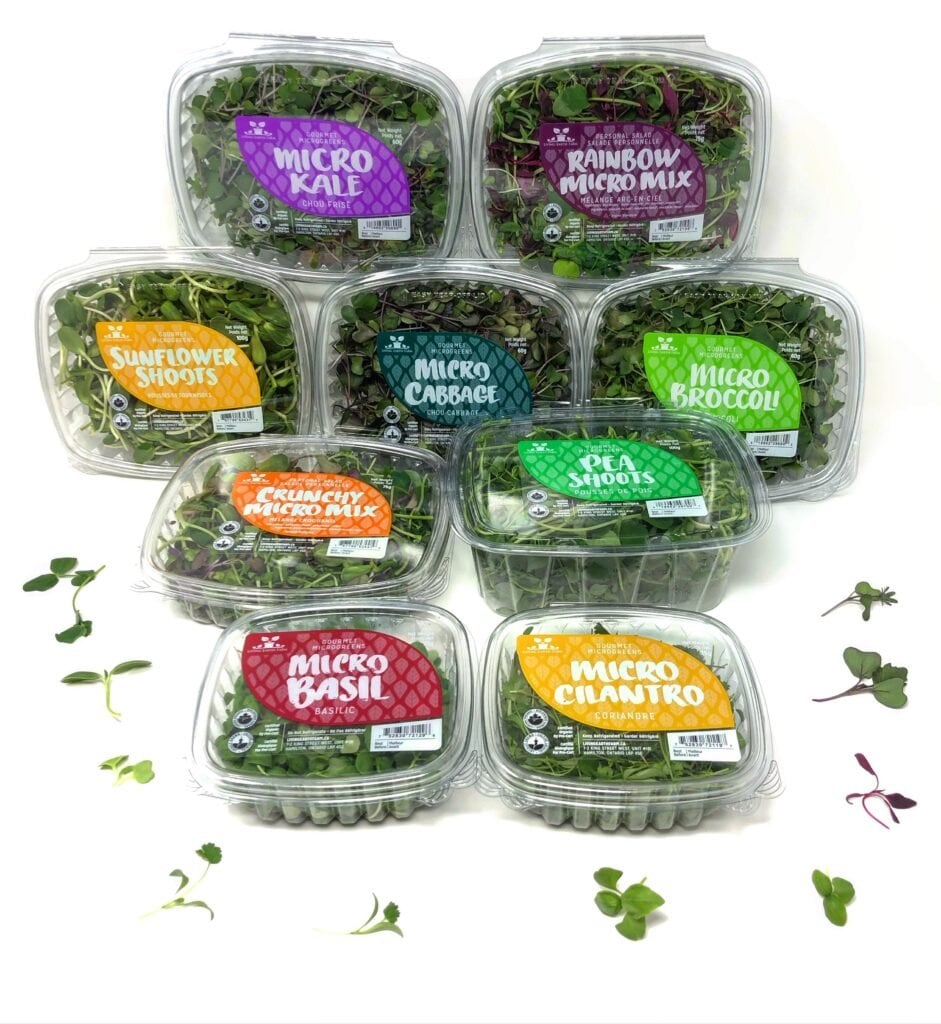I won’t even lie to you…this might be one of our weirdest cash flow ideas of the year, but I’ll let you be the judge. But you know me, and that’s how we do it here at Contrarian Thinking. All you’ll need is a handful of seeds and some soil for this one. Green thumb NOT required.
Today in 10 minutes or less, you’ll get
- How the garnish on your avocado toast could make you a couple of Benjamins
- What I’d do if I wanted to start a simple side hustle from my apartment
- Why this biz model may be scalable AF with 80%+ margins (yes, really!)
- How to get started, even if you have a love-hate relationship with your indoor houseplants
WHEN THE GREEN STUFF CALLS
The homegrown kind…

Meet Jonah. He’s one of us. An avid reader of Contrarian Thinking who makes $700k+ a year selling what? Hippie rabbit food, no joke.
It all started with a tomato—well, a handful of ‘em really.
Flashback to a younger Jonah, working an office job at a company that regulated pension funds while he was in university.
Jonah had been growing his own veggies and microgreens for years after his dad taught him how in his childhood backyard. Cute, right?
Some call it father-son bonding. I call it generational entrepreneurship.
So, he didn’t think much when he offered his co-workers one of his garden-fresh cherry tomatoes while waiting in line for a microwave in the office cafeteria.
The look on his co-worker’s face said it all: it was the best cherry tomato they’d ever tasted.
But the tomato died on the vine from there.

Photo source: Jonah Krochmalnek
When Jonah graduated college, the golden handcuffs came a-callin’—this time in the form of a job as a commercial real estate appraiser.
Only problem was he knew on his very first day that this was not his scene.
So, he did what any Millennial does: he started growing a little green in his parent’s spare bedroom. Not pot, you delinquents.
Now Jonah is the founder of one of the largest vertical microgreens farms in Canada. Quite the power greens glow up.
And he did it with less than $700 of equipment and a packet of seeds
Back in 2013, there wasn’t a lot of info on how to create a biz like this, so Jonah learned it all on his own. He figured:
“How hard can it be to grow a few plants?”
Turns out, not quite as easy as he thought. His first tray of microgreens was inedible, but he had a vision and could see the Canadian dollar signs, even then.
His strategy back then was to reinvest all his profit back into the business: new software, different seed and crop varieties, and various at-home setups.
He tried basil. He tried kale. He tried MANY varieties of lettuce, but he kept coming back to microgreens.
They’re one of the most profitable crop varieties and one of the easiest to grow.
It was a season full of experimentation, but in his first twelve months, Jonah cleared $60k in revenue. Not bad for spending less than $1k to get set up.
Now for my favorite part. Let’s break down some numbers.
- One 6ft indoor plant rack = ~2k in revenue each month
- If the profit margin is about 85%, you’re looking at ~$1.7k in profit in a month. But let’s say you give yourself a little more wiggle room.
- For example, after outgrowing his parent’s spare bedroom, Jonah got his own facility and retrofitted a 5,000 sqft commercial space with up to 8 levels of plant bays per rack.
- After scaling up and signing some pretty big contracts with local restaurants and suppliers, he continued to grow the biz.
- 8 years after getting started, Jonah made $700k in 2021 and has managed to keep a 40% profit margin as he’s scaled.
He’s now on track to be a millionaire thanks to butter lettuce and little gems.

Photo source: Twitter
A few things you should know right off the bat about this biz model:
- Microgreens are considered any crop that’s harvested after sprouting—typically 7 to 21 days of growth after planting. Think micro broccoli, cabbage, basil, cilantro, and kale.
- They’re also one of the most profitable legal crops because they’re cheap to grow but $$$ to buy as a consumer. At $20-$50 an order, we’re talking about a gross profit margin of ~80%.
- Microgreens are up to 20x more nutritional than your standard power greens pack at Whole Foods. They’re also 100% responsible for why your favorite brunch foods are so effing expensive.
- You only need $1000 for the equipment to get started (which he made back in the first couple of months).
- It’s highly scalable. You can get started with a standard-sized indoor plant rack that’s about 6 feet wide and stack them vertically to minimize space. Want to double your revenue? Just add six more feet of storage or stack vertically and you’re in business.
- You can apparently do this side hustle even if you’re known for killing every single one of your houseplants. Microgreens are easy AF to grow, especially with the help of specialty courses like the one Jonah teaches. Hit reply if you want me to try this… I kind of think this would make a SWEET YouTube video. Let’s see if Jonah’s right.

Photo source: Jonah Krochmalnek
Looks a little like Breaking Bad meets Willie Nelson if you ask me.
Just to give you an idea… if you want to start small, this photo from 2013 is an example of what the early days of your setup could look like.
Nothing fancy—just a rack, some lights, and a little TLC.
Here’s how to get started growing your own microgreens:
Step 1: Find your space and grab your equipment
Again, you’ll only need about six feet of indoor space to get started. Window light not required. If you’ve got room in your office, a spare bedroom, the cupboard under the stairs—hell, even in your guest bathroom—you’ve got what you’ll need to grow your own microgreens.
Step 2: Grow your greens
Next comes putting seed to dirt. Basically, you’ll prep to plant and then harvest your first round o’ greens about one to three weeks after you first get started.
If a green thumb just isn’t on your list of most redeeming qualities, you can leverage a software called VertiGrow that will create a daily checklist for you to manage your crop rotation and watering schedules.
Step 3: Start finding your customers
When you’re first starting out, you’ll most likely operate under a direct-to-consumer business model and deliver your product directly to your customer.
Aka schlepping your greens to a local ag share, farmer’s market, or even right to your customer’s doorstep.
However you do it, you want to create a subscription model and schedule deliveries immediately.
Jonah started out by landing customers in a subscription model with local restaurants and scheduling produce pickups or home deliveries on the same days each week to make the harvesting and driving more efficient.
Two other very important things to know:
- Most chefs and restaurants will order about $65-$70 of produce per week, while your average household customer won’t pay more than $15. Household customers are also known for pausing orders frequently and can be considered a more volatile customer.
- Restaurants will require you to create connections with the head chef or kitchen staff which might be a barrier to entry, but you’ll also make 4X in weekly sales.
Now that his business has scaled, Jonah has specially branded packaging, but for years, his products were in small plastic containers or produce bags.

Photo source: Jonah Krochmalnek
This business model is sunk if your sales process sucks
The trick to cracking the code of a business model as complex as this one is setting up a subscription model from day one.
Ideally, you and your customer (whether it’s a restaurant or home delivery) decide on a one or two-day-a-week product drop (likely early Monday or Tuesday to replenish after the weekend, and Thursday or Friday to replenish before the weekend).
Then, you’ll need to make sure that you have enough microgreens for each round you harvest.
Eventually, the question will be whether you need to add additional trays or if it’s better to keep your microgreens business at its current size. This riddle does not always have an easy answer.
A few things I’d do if it were me…
- Leverage social media as a sales engine: There’s a lot of potential here to use social media as a growth platform, based purely on aesthetics. If you’re sourcing local customers, I’d probably stick to Facebook and Instagram. But if you’ve got quite an aesthetic setup, TikTok might also be a good idea.
- Set up your backend with scaling in mind: Because this model is extremely scalable (like stack a rack on top of another one, easy) I’d probably focus more on getting systems and processes set up from the beginning. A CRM and basic sales platform like Stripe (or even Venmo, as long as you’re organized) will help you once you start racking up repeat customers.
- Be a vigilante about CONSISTENT product quality: This business is highly unforgivable. If you don’t deliver quality ingredients every. single. time, your customer can easily head over to their local grocer or possibly even find another vendor. Do what you can to make your products an 11 out of 10 and you’ll be more likely to attract repeat and referral customers.
I love this business model. Did you know that one out of four grocery stores in the US is owned by a large chain? How about we go local, micro, and take back the businesses all around us? Because ya know, f*ck Monsanto.
We do the work,
Codie & Contrarian Crew
Written by Codie Sanchez, Edited by Rananda Rich and the Contrarian Team
CONTRARIAN EXTRAS
The Not So Boring Section:
Maybe a boring business is better than the rollercoaster of corporate career uncertainty
Another reason to own your cashflow… ‘cause even if the accountants can’t, you can
And when you celebrate a smashing year, just try not to get banned, will ya?
These 3 businesses will make you richer than Odell Beckham Jr (starting from $1,000)

This week’s YouTube video is brought to you by our friends over at Bench.




